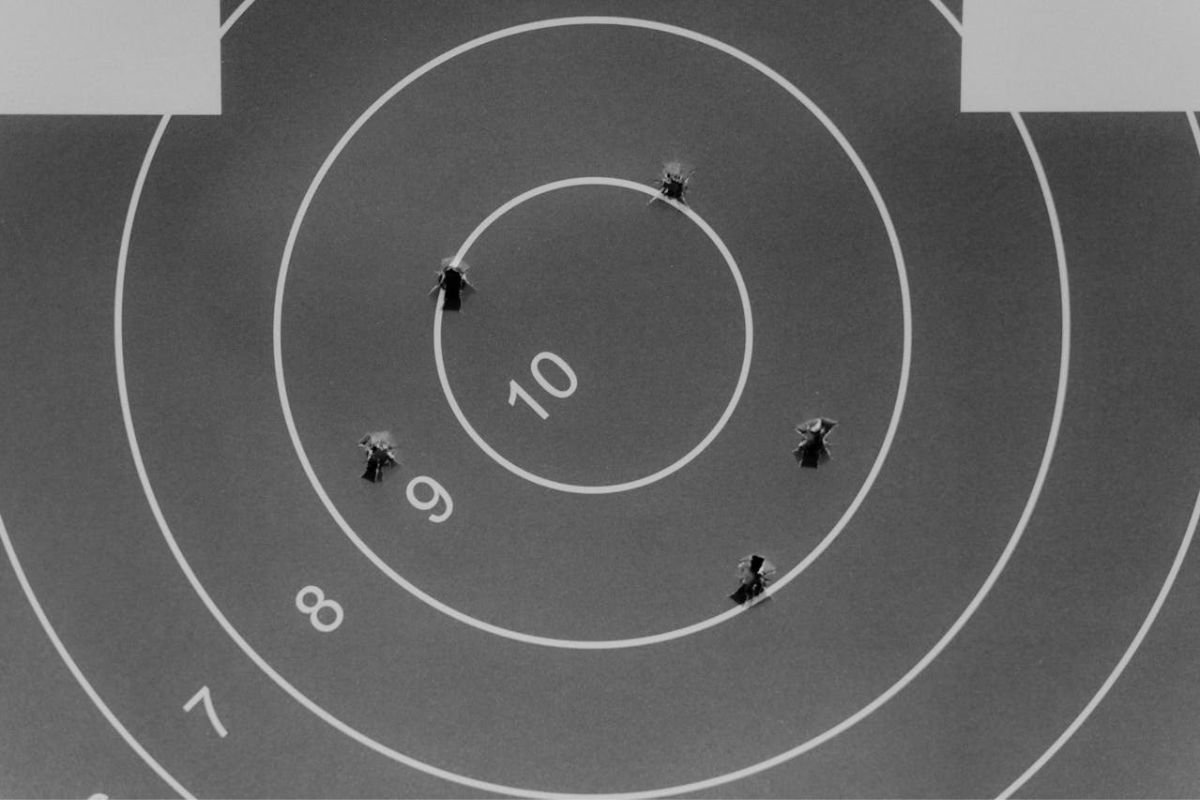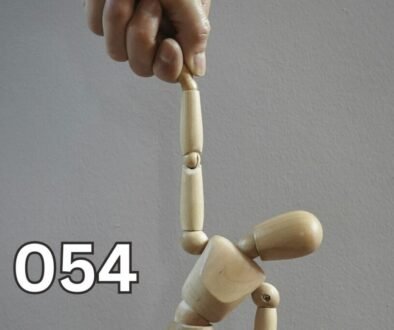Think Smarter, Not Harder: 7 Mindsets That Will Change Your Life

08 APRIL 2025
Your Mindset: The Key to Unlocking Potential
Have you ever wondered why some people thrive in the face of challenges while others falter? The answer often lies in mindset.
At Stanford University, psychology professor Carol Dweck has explored this in depth, uncovering how the way we think can shape our lives. In her acclaimed book, Mindset: The New Psychology of Success, she reveals that the secret to achievement isn’t just talent or hard work, it’s whether we approach life with a fixed mindset or a growth mindset.
This distinction matters. A fixed mindset sees abilities as unchangeable, while a growth mindset believes they can be developed through effort and learning. The difference? It could mean pursuing dreams with determination versus giving up at the first hurdle.
Even if you just read three minutes into today’s insights. You might walk away with a fresh perspective that inspires positive change in your life.
1. ‘Mosquito’ Mindset: Adapting with Agility

Let’s dive into the first mindset: the “mosquito mindset.” Did you know that a single raindrop can weigh up to 50 times more than a mosquito? Imagine the impact, it’s like a bus colliding with a person! Yet, despite the odds, mosquitoes survive even the heaviest downpours. How?
Using high-speed cameras, researchers uncovered their secret. When hit by a raindrop, a mosquito doesn’t resist. It tilts or rolls slightly, letting the droplet slide off its hydrophobic surface, similar to how lotus leaves repel water.
Rolling with Life’s Hits
When a raindrop strikes directly, mosquitoes adapt by “going with the flow.” They ride the raindrop’s force, minimising damage, and then separate with remarkable agility to continue flying.
This effortless adaptability reminds us of Darwin’s principle: survival favours those who can adjust to change, not just the strongest or smartest.
Navigating 10X Change
Andy Grove, Intel’s former CEO, described the idea of “10X change,” where external shifts often feel ten times faster than anticipated. While mosquitoes aren’t strategising about change, their ability to adjust on the fly (literally) is a natural example of resilience.
Consider how advancements in AI and automation have already transformed countless industries. Roles once thought untouchable are now transforming or disappearing altogether. The tide of progress stops for no one.
Finding Stability in the Storm
To navigate uncertain times, we can learn from mosquitoes. Instead of resisting change, flow with it. Adapt intentionally. By doing so, you create your own sense of stability, even amidst chaos. That’s the first mindset worth mastering.
2. ‘Bullet Hole’ Mindset: Seeing Beyond the Obvious

The second mindset is what I like to call “bullet hole thinking.” It’s a powerful approach to problem-solving, rooted in a story from World War II that still resonates today.
A Wartime Dilemma
During World War II, U.S. planes faced constant danger from enemy fire. To reduce losses, the military sought to reinforce their aircraft with armour. But there was a catch: too little armour left planes vulnerable, while too much made them heavy and less agile, ironically putting them at greater risk.
A statistical research team at Columbia University, led by Abraham Wald, was tasked with solving this problem. They analysed the bullet holes on planes that returned from missions. The logical conclusion seemed clear: reinforce the areas with the most damage. But Wald had a different idea.
The Hidden Truth of Missing Bullet Holes
Wald argued that armour should be added to the areas with the fewest bullet holes, such as the engines. Why? He pointed out that the planes they were studying had survived their missions. The bullet holes on these planes represented damage that could be endured without causing a crash.
The lack of bullet holes in critical areas like the engine revealed the fate of planes that didn’t make it back, those were the ones hit in vital spots. Wald’s insight was simple yet revolutionary: to protect future planes, the military needed to focus on the areas that weren’t visible in their data.
A Mindset for Life
This shift in perspective saved countless lives and aircraft. And the lesson here goes far beyond wartime strategy. In our own lives, it’s easy to focus on the obvious or what’s right in front of us. But true insight comes from identifying what’s missing, those unseen vulnerabilities that can have the greatest impact.
Think of a military hospital. You’ll see more soldiers with leg wounds than chest wounds. That doesn’t mean leg wounds are more common; it’s because chest wounds are often fatal. If you’re hit in the chest, chances are you won’t make it to the hospital. This mirrors the missing bullet holes on planes, what you don’t see often tells the real story.
The Power of Probabilistic Thinking
This kind of thinking, known as probabilistic reasoning, teaches us to look beyond surface-level evidence. By considering the unseen factors, the silent evidence, you can create more effective strategies and make better decisions in any area of life. It’s about shifting your focus from the obvious to the hidden, ensuring you’re prepared for challenges that might not yet be visible.
Fishing Where the Opportunities Are: Lessons from Charlie Munger
Charlie Munger, the legendary investor and vice-chairman of Berkshire Hathaway, once compared investment wisdom to fishing. His advice?
- The First Rule: Fish where the fish are.
- The Second Rule: Never forget the first rule.
Simple, yet reflective, isn’t it?
Life’s Essential Questions
At its core, many of life’s challenges can be boiled down to three fundamental questions:
- What should you do?
- What should you avoid doing?
- What should you keep doing consistently?
These questions aren’t just for investors; they guide all kinds of decision-making. Whether you’re tackling a problem, planning your future, or deciding where to invest your time and energy, the answers to these questions provide a clear path forward.
The Power of Probabilistic Thinking (Again)
This is where probabilistic thinking shines. It helps you weigh your options, understand potential risks, and focus on actions that are most likely to lead to success. It’s not about chasing every opportunity or solving every problem, it’s about clarity.
By learning to identify where your efforts will have the greatest impact, you can avoid distractions and double down on what truly works. Think of it as strategic energy management: directing your resources toward areas that offer the best returns and stepping away from unproductive pursuits.
A Thought to Share
If this perspective resonates with you, why not share it with someone who could benefit from it? Sometimes, a simple shift in thinking can unlock new possibilities.
With that, let’s move on to the third mindset.
3. The ‘Returning Book’ Mindset: Turning Challenges into Opportunities

The third mindset we’re exploring today is the ‘returning book’ way of thinking. It’s a story of creativity, resourcefulness, and reframing challenges to uncover unexpected solutions.
A Costly Problem
Back in the 1990s, the British Library faced a daunting task: relocating over 13 million books from its old London site to a new home in St Pancras. The estimated cost? A jaw-dropping £3.5 million.
If you were the librarian, how would you tackle this enormous expense? You might consider hiring cheaper labour or cutting transportation costs. But for a task of this scale, these small changes wouldn’t make a dent in the overall budget.
A Bold Proposal
Enter a young librarian with an unconventional idea. He approached the head librarian with a proposition: “I can solve this for just £1.5 million.”
The next day, an announcement was published:
“Starting today, the British Library will allow free and unlimited borrowing for the public. Due to our relocation, we kindly ask that all borrowed books be returned to our new location in St Pancras.”
Turning Borrowers into Movers
By reframing the challenge as an opportunity for public engagement, the librarian transformed the problem. Thousands of borrowers eagerly participated in the book-moving effort. The majority of the collection was relocated with minimal cost, saving the library millions and proving the power of innovative thinking.
Breaking Through Mental Walls
As neurologist and author Oliver Sacks once wrote in The Man Who Mistook His Wife for a Hat:
“If thinking is a wall, the world lies on the other side of it.”
Often, what feels like a dead end isn’t the challenge itself but our rigid way of viewing it.
When you face an obstacle that seems impossible, try stepping back. Instead of pushing harder, ask yourself:
- Can I approach this differently?
- Is there a way to turn this challenge into an opportunity?
Just like the young librarian, you might find a brighter, more creative solution waiting on the other side of the problem.
4. The ‘Lighthouse’ Mindset: Seeing Beyond the Horizon

The fourth mindset we’ll explore is called ‘lighthouse thinking.’ Like a lighthouse that guides ships safely to shore, this way of thinking encourages us to look far beyond the immediate challenges, focusing on a broader and more strategic view of life’s journey.
Thinking in Multiple Dimensions
Thomas C. Corley, author and researcher of self-made millionaires, discovered a common trait among successful entrepreneurs: they think in multiple dimensions.
While many people focus narrowly on their immediate tasks or areas of expertise, multidimensional thinkers connect ideas across disciplines. They consider the long-term ripple effects of their decisions and analyse patterns stretching from the past into the future.
For example:
- One-dimensional thinkers often prioritise quick wins or short-term gains.
- Multidimensional thinkers, however, focus on strategies that create sustainable, long-term success.
This difference in approach often determines whether someone achieves temporary relief or builds a foundation for enduring growth.
Learning from Visionary Thinkers
Let’s consider some examples of individuals who embody ‘lighthouse thinking’:
- Jeff Bezos: The Amazon founder is famous for investing billions in long-term experiments, even if they take years, or decades, to pay off. From pioneering online retail to developing services like AWS and Alexa, Bezos’s forward-looking approach has been key to Amazon’s dominance.
- Warren Buffett: Known for his ‘moat’ philosophy, Buffett focuses on businesses with a competitive edge that can last decades. His patient, sustainability-driven investment style has made him a legendary figure in finance.
- Masayoshi Son: The founder of SoftBank is renowned for his futuristic thinking and bold investments. He often points out that extraordinary success requires a willingness to take risks and think far ahead, traits that most people struggle to embrace.
These visionaries share a common ability to look beyond immediate problems, connect the dots across time, and take calculated risks to achieve sustainable success.
Broaden Your Perspective
‘Lighthouse thinking’ challenges us to zoom out and think strategically about the bigger picture. It’s not just about solving today’s problems, it’s about shaping tomorrow’s outcomes.
By adopting this mindset:
- You gain clarity and purpose.
- You navigate challenges with long-term goals in mind.
- You position yourself for success that endures beyond fleeting moments.
So, the next time you face a decision, ask yourself: Am I focusing too narrowly, or am I considering the broader impact of my choices?
5. The ‘Upstream’ Mindset: Solving the Right Problem

The fifth type of thinking we’ll explore is called ‘upstream thinking.’ It’s a mindset that asks us to move beyond surface-level solutions and focus on understanding the root cause of a problem.
If you were to ask top-tier programmers about the greatest challenge in their profession, you might expect answers about mastering new coding languages or refining algorithms. Surprisingly, many point to a different challenge: “clarifying the requirements.”
This insight doesn’t just apply to technology, it resonates deeply with life. Identifying the core issue, the ‘upstream problem,’ is often the key to crafting truly effective solutions.
A Lesson in Clarity: The Google Ad Story
Xie Xiaohu, Vice President of Tencent, once shared a story from his days at Google that beautifully illustrates upstream thinking.
At the time, his team was tasked with improving the conversion rate of ads shown to users. The business team noticed that Chinese users had particularly low conversion rates and approached the tech team with a specific request: “Make the ad font larger and the background more eye-catching.”
Instead of immediately acting on the request, the tech team paused and asked: “What’s the core problem you’re trying to solve?”
This simple question shifted the conversation, uncovering that the ultimate goal was to increase the conversion rate, not just to tweak fonts and colours. With this clarity, the tech team delved deeper, analysing user behaviour.
Their investigation revealed a fascinating insight: Chinese users were accustomed to cluttered websites with banners at the top of the page. Over time, these users had developed a habit of ignoring the top section of any webpage, scanning the lower sections instead.
Google’s ads, however, were placed at the very top of the page, precisely where these users weren’t looking. By relocating the ads to a lower position, the conversion rate improved significantly.
The Power of Upstream Thinking
This story underscores a critical lesson: great engineers, and problem-solvers of all kinds, don’t just take requests at face value. Instead, they explore the underlying human needs and motivations behind those requests.
By focusing on the root cause of the issue rather than surface-level fixes, they deliver solutions that are both effective and transformative.
How to Apply Upstream Thinking
Next time you’re faced with a challenge, resist the urge to jump into action right away. Instead, take a step back and ask yourself:
- What is the real problem I’m solving?
- What are the motivations or needs driving this challenge?
When you address the core issue, you’ll find that your solutions create meaningful, lasting impact.
Don’t Play Whac-A-Mole: Addressing Problems at Their Core
The book The McKinsey Way of Thinking with Charts aligns with the ‘Don’t Play Whac-A-Mole’ analogy. If you’ve ever played the game, you know the frustration of smacking one mole down, only for another to pop up elsewhere. Tackling problems this way, reactively and superficially, might provide short-term fixes, but it rarely solves the root issue.
Why Fixing Symptoms Isn’t Enough
When challenges arise, it’s natural to focus on what’s immediately broken. You see a problem, you fix it, and move on, or so you think. But this approach often deals with symptoms rather than the deeper causes behind them.
Consider how many times we face the same issue repeatedly because we didn’t address it fully the first time. The cycle feels endless because we haven’t taken the time to uncover the underlying factors driving those outcomes.
Shifting from Fixing to Transforming
The best problem-solvers don’t stop at addressing visible issues. They dig deeper, tracing problems back to their origins. But the true game-changers? They take an even bigger step back and transform their mindset entirely. Instead of focusing solely on the immediate situation, they ask themselves:
- What is really driving this issue?
- What can I change at the source to prevent this problem from recurring?
By identifying the critical leverage points, they not only resolve the issue at hand but also create a framework for sustained success.
Ask the Bigger Questions
Next time you face a challenge, pause and reflect:
- Am I merely reacting to the visible problem?
- Have I identified the root cause?
- What is the bigger picture that I might be missing?
Asking these questions may take extra effort upfront, but it could save you from an endless cycle of Whac-A-Mole problem-solving.
6. The Lazy Ant Mindset: Doing Less, Achieving More

The sixth mindset we’ll explore is what we call the ‘lazy ant thinking.’ While it may sound counterintuitive, this concept is rooted in fascinating findings from an experiment conducted by evolutionary biologists at Hokkaido University in Japan. Their work uncovered a surprising truth about ants, and it’s a lesson we can apply to our own lives.
The ‘Lazy Ant Effect’: An Unexpected Revelation
Researchers observed three groups of black ants, each colony comprising 30 members. Most ants were diligently performing tasks like cleaning, foraging, and tending to larvae, the essential, visible work of the colony. But a smaller group stood out for their apparent idleness.
These so-called “lazy ants” wandered around the nest, seemingly aimless and unproductive. At first, their behaviour appeared to contribute nothing. Intrigued, the researchers decided to label and track them more closely. What they discovered changed everything.
When the colony faced a disruption, like a sudden loss of their food supply, the hardworking ants became disorganised, overwhelmed by the crisis. In contrast, the “lazy ants” stepped in. Calm and prepared, they led the colony to new food sources with precision and efficiency.
It turned out these ants weren’t lazy at all. They had spent their time observing the environment, gathering critical intelligence, and preparing for scenarios others hadn’t anticipated. Their readiness in a time of crisis proved invaluable to the survival of the colony.
Effort vs. Effectiveness
This phenomenon, now referred to as the ‘lazy ant effect,’ reminds us that not all valuable contributions are immediately visible. Hard work is important, but it doesn’t always equate to meaningful progress.
Psychologist Jordan Peterson highlights this in his self-assessment checklist, describing common traps people fall into:
- Spending too much time on easy tasks while feeling productive.
- Mistaking preparation for action and procrastinating under its guise.
- Appearing busy while avoiding real progress.
- Failing to evaluate whether your efforts are leading to meaningful results.
Work Smarter, Not Harder
Think about it: have you ever read countless books without connecting the dots or applying what you learned? Have you taken pride in the hours you worked rather than the outcomes you achieved? These behaviours might be signs that you’re stuck in a cycle of busyness rather than effectiveness.
Like the “lazy ants,” there’s immense value in pausing to observe and recalibrate. Taking time to reflect, assess, and adjust your approach ensures your efforts are intentional and impactful.
No matter how hard you’re working, remember to pause occasionally and ask:
- Am I moving in the right direction?
- Is my effort leading to real progress?
Effort is admirable, but intentional effort is transformative. Sometimes, stepping back is the smartest move forward.
7. The Field Mindset: Seeing Beyond the Surface
The seventh type of thinking we’ll explore is called Field Thinking. This concept stems from the early 20th-century work of psychologist Kurt Lewin, who developed Field Theory. But what does it mean in practical terms?
Lewin’s theory suggests that our environments influence our actions in significant ways, but not just in the obvious, physical sense. He divided the environment into two categories:
- The Geographical Environment: The objective, physical world around us.
- The Behavioural Environment: How we perceive or imagine that world.
In other words, it’s not only the reality of a situation that impacts our choices but also how we experience or interpret it.
The Frozen Lake: A Lesson in Perception
To illustrate this principle, a popular European folktale offers a compelling parallel to Lewin’s ideas about how perception shapes behaviour:

On a stormy winter night, a man riding his horse became disoriented amidst a heavy snowstorm. The blanket of snow erased all visible landmarks, leaving him wandering blindly. Eventually, he stumbled upon an inn and felt immense relief, thinking he’d overcome a harrowing journey.
But the innkeeper was astonished when he learned where the man had come from.
“Do you realise,” the innkeeper exclaimed, “you just rode across Lake Constance?”
The man was stunned. Unbeknownst to him, the thick layer of snow had concealed the frozen lake beneath, making it appear as a solid snowy plain. Without knowing, he had crossed a deadly, treacherous path.
When the man fully grasped the life-threatening situation he had unknowingly faced, the shock was so overwhelming that, legend says, it caused his sudden death.
Though likely fictional, this story underscores a key lesson of Field Thinking. The frozen lake was part of the geographical environment, the objective reality. But to the man, it appeared as a safe plain within his behavioural environment, giving him the confidence to proceed.
Shifting Perception: The Key to Field Thinking
This concept highlights an important truth: our actions are not shaped solely by reality but also by our interpretation of it. In challenging situations, we may perceive obstacles where none exist or miss opportunities hidden in plain sight.
When faced with difficulties, ask yourself:
- Am I reacting to the true environment, or to my perception of it?
- Could a shift in perspective reveal new possibilities or solutions?
The story of the frozen lake teaches us that altering our perception can transform what seems insurmountable into something manageable. Often, the first step to solving a problem isn’t changing the world around us, it’s changing how we see it.
Final Thoughts: Creating an Environment for Growth

Your environment has an extraordinary influence on your mindset, and by extension, your life. If you’re striving for meaningful change, the first step is to craft a setting that aligns with your aspirations. Here’s how you can start shaping your surroundings to work in your favour:
Improve Focus by Minimising Distractions
Want to improve your focus? Begin by designing a space that helps you concentrate. Small adjustments can make a big difference:
- Turn off notifications on your devices to reclaim your attention.
- Organise your workspace to reduce visual clutter and create a calming atmosphere.
- Set clear boundaries with others to carve out uninterrupted time for deep work.
Protecting your attention isn’t just a practical step, it’s a skill that will compound its benefits over time.
Elevate Your Mind with High-Quality Content
Looking to sharpen your cognitive abilities? Replace fleeting, low-quality distractions with content that challenges and inspires you.
- Swap endless short videos for thought-provoking books or articles.
- Dive into classic literature, problem-solving puzzles, or enriching podcasts.
The principle is simple: what you feed your mind determines what it produces. Prioritise quality input for quality output.
Cultivate Positivity in Your Perspective
If you want to maintain a positive outlook, it’s essential to surround yourself with uplifting influences:
- Avoid spending excessive time on sources of negativity, like doomscrolling or toxic relationships.
- Connect with nature, even a brief walk outside can refresh your perspective.
- Build habits that allow you to appreciate life’s small joys, from journaling to practicing gratitude.
Your surroundings, both physical and social, can either uplift or weigh you down. Choose wisely.
Transformation Begins with Your Environment
If you’re feeling stuck, take a closer look at your surroundings. Often, small adjustments can ignite significant change. Want to achieve more? Start by intentionally curating an environment that encourages growth, resilience, and creativity.
At its core, your mindset and your achievements are deeply interconnected. The environments you choose and the habits you cultivate within them serve as the foundation for everything you do. By reshaping your surroundings, you empower yourself to grow beyond your current limitations.
The Path to Boundless Growth
“The heights your mind cannot imagine are the same heights your feet cannot climb.” This reflective truth reminds us that growth requires preparation:
- The books you read expand your understanding.
- The experiences you seek shape your resilience.
- The connections you build broaden your perspective.
Each deliberate choice is a stepping stone, elevating you toward possibilities you may never have envisioned.
Embrace the Journey of Self-Improvement
Growth doesn’t come in leaps; it comes in steps, through consistent effort, deliberate action, and finding wisdom in the everyday. By embracing this process, you’ll eventually outgrow the boundaries of your current environment and discover a broader, richer world.
So, which way of thinking resonates most with you? Take a moment to reflect. Bookmark this page as a reminder and revisit it when you need a fresh perspective. These ways of thinking aren’t just concepts; they’re tools to reshape your trajectory and unlock a life of growth, resilience, and fulfilment.



